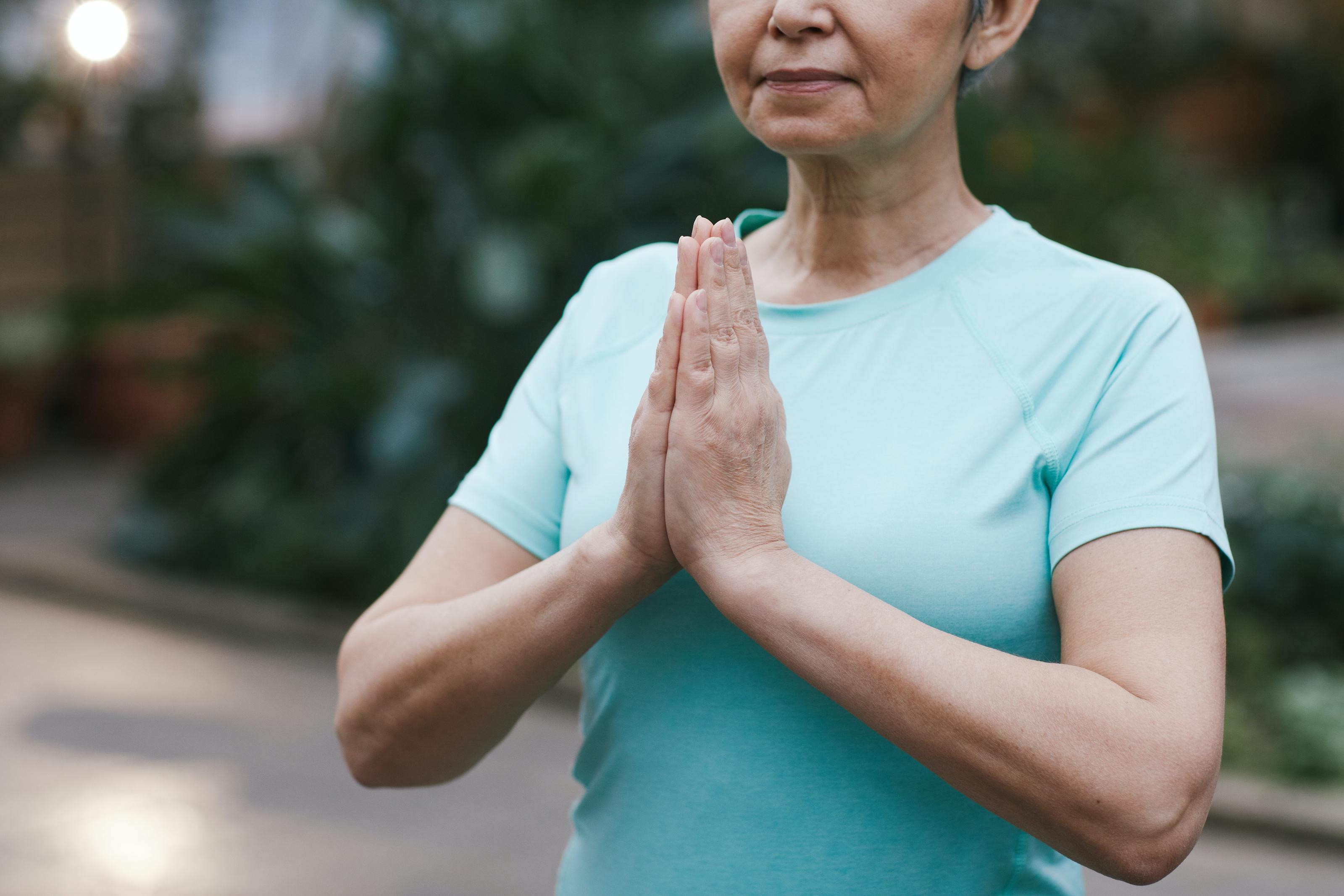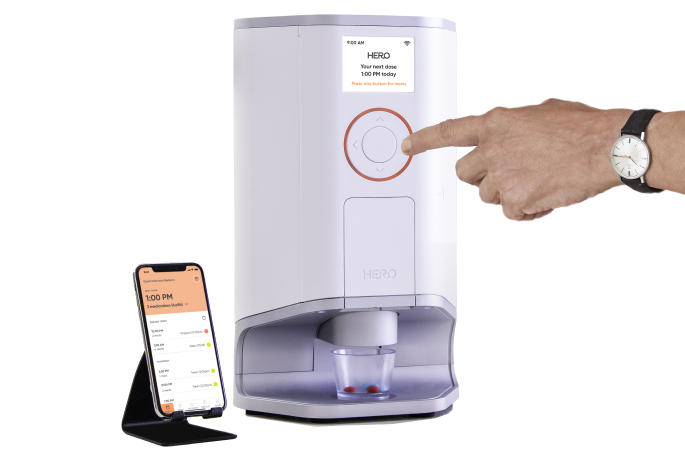5 Meditations for Caregivers: Quick Practices to Relieve Stress in 10 minutes or Less

Time is a luxury for caregivers. Tending to the needs of your care recipient, your family, and your personal obligations may leave you with a sense of anxiety, depression, or emotional burnout. While coping with caregiver strain can be a multi-step process, what if you had a simple way to improve your emotional wellbeing?
With the following meditations for caregivers, all you need is 10 minutes or less.
5 Meditation Practices for Caregivers
1. Sit quietly and do nothing (really)
If you’re new to meditation, you may feel a bit uncertain about your meditation practice. What should you think about? What do you do with your hands? Are you supposed to sit a certain way?
One of the easiest forms of meditation is to simply sit still. Don’t worry about your posture or if you’re doing it right. Just be still in a quiet place—like an empty room, outside in nature, or your back porch—and do nothing.
It may sound a bit strange to do nothing, but nothing is actually something. Think of it like how a speaker purposefully pauses before an important quote for dramatic effect. The pause brings more presence to the quote and the audience, as their ears perk awaiting to hear what’s next.
The stillness you create in meditation works similarly, bringing more presence to your life now and the activities you do afterwards. So think of meditation like a purposeful pause. Do this for 10 minutes as a daily meditation practice, and your stress levels are likely to subside.
2. Follow your breath
When you sit still in a quiet place, your mind may begin to wander. What should you focus on? Your breath may be the perfect solution. Breathing meditation is one of the most popular forms of mindfulness meditation; all you do is observe your breath as you inhale and exhale. To make the practice easier, you may find it helpful to count breaths. For example, you breathe in, breathe out, and count “one”. You breathe in, out, and count “two”. Continue this pattern until you reach 10, and then start back at one.
Following your breath, like many forms of meditation, refocuses your mind, shifting your attention away from daily stresses to the present moment. Think of it like watching a movie to escape a tiring day. You shift your attention away from your daily worries or frustrations to the action unfolding on the screen. By the time the film is finished, you’ve forgotten about everything that was bothering you. Focusing on your breath has a similar impact: you eventually shift your attention away from the perceived stresses of your life.
3. Check in with yourself with a body scan
The body scan is another popular form of meditation that’s fairly easy to do. Just like when you shifted your attention to your breath in the last exercise, here you shift your attention to different parts of your body.
First, get comfortable either sitting or lying down. Once you’re ready, pay attention to the feelings in your toes. Are they tense or at ease? Are they touching a rug, hardwood floor, or other surface? Do this for 5-10 seconds and then move your attention up your leg to your calves. How do they feel? Tight or relaxed? Does the room temperature make them warm or cold? Again do this for 5-10 seconds and then continue up your body to your thighs, glutes, abdomen, and so on.
Just like the name of this meditation implies, you mentally scan your body, shifting your attention away from stressful thoughts to what you’re experiencing in the moment.
4. Acknowledge the present moment with noting
Another form of mindful meditation for caregivers is called noting. I recommend two different styles of this practice, both of which are incredibly easy and can be done in less than 10 minutes. In both cases, the goal is to acknowledge something happening in the moment:
- Noting emotions: If you’ve had a particularly stressful day, this exercise may be perfect for you. Simply go to a quiet place, get comfortable, and note your feelings. If you feel angry, for example, quietly say to yourself aloud or in your head, “Anger.” If you feel sadness, do the same and say, “Sadness.” You can also use longer sentences and say, “I feel angry, and it is okay to feel angry.” By acknowledging your feelings, you become more conscious of your emotions. According to The University of Kansas Health System, this practice can help loosen emotion’s grip on your physical and mental health.
- Noting sounds: An alternative way to practice this meditation is to note sounds. In your quiet room, you may hear the air conditioning running, a dog barking, or a lawnmower running. Just like with feelings, name the sounds as they come up. Say, “dog barking,” “air conditioning,” etc. By doing this, you bring your attention to the present moment, paying attention to your senses and the world around you.
5. Be kind towards yourself with a self-compassion meditation
Being too hard on yourself and thinking you’re not doing enough can lead to caregiver burnout and compassion fatigue. In reality, you may be making important sacrifices in your personal life and career to help the person you’re caring for. So go easy on yourself and remember that caring for yourself is important. You deserve the same compassion and love you give to others, and that’s where self-compassion meditation comes in.
The popular meditation app Headspace offers a simple self-compassion guided meditation, combining many of the techniques you’ve learned above, as well as guided imagery. Try it yourself by following these steps below:
- Step 1: Get comfortable in a quiet place and close your eyes.
- Step 2: Follow your breath in and out as you notice sounds around you.
- Step 3: Bring your attention to the top of your head and do a slow body scan down to the tip of your toes.
- Step 4: Return your attention to your head, and imagine sunlight gently streaming into you as it fills your arms, legs, torso, and entire body.
- Step 5: Watch any tension slowly fade as you imagine the light moving through your body and you allow your mind to do whatever it likes.
- Step 6: Open your eyes. Before returning to your caregiving duties, take a minute to reflect on how it feels to be gentle with yourself.
More Than Meditation: Other Ways to Unwind as a Caregiver
While meditation can calm your mind, it’s not the only way to improve your quality of life as a caregiver. There are many stress reduction activities you can do in 10 minutes. For example, you can take a walk outside, call up a friend for a quick chat, play with a pet, or practice yoga.
Whether you’re a professional or family caregiver, keeping up with your care recipient’s strict medication regimen may cause you stress. Our medication management service, Hero, can help relieve this responsibility. Included in the service is a smart device that automatically sorts and dispenses up to 10 medications and notifies you when they should be taken. Hero also tracks adherence, refills, and up-to-date info on each prescription in the connected mobile app, so medication management can become one less thing to worry about.
However you choose to alleviate your caregiver stress, don’t underestimate how a 10 minute break can help––especially if you follow one of these five meditation suggestions!
Complex med schedule? We solved it.
Hero’s smart dispenser reminds you to take your meds and dispenses the right dose, at the right time.

The contents of the above article are for informational and educational purposes only. The article is not intended to be a substitute for professional medical advice, diagnosis, or treatment. Always seek the advice of your physician or other qualified clinician with any questions you may have regarding a medical condition or its treatment and do not disregard professional medical advice or delay seeking it because of information published by us. Hero is indicated for medication dispensing for general use and not for patients with any specific disease or condition. Any reference to specific conditions are for informational purposes only and are not indications for use of the device.



